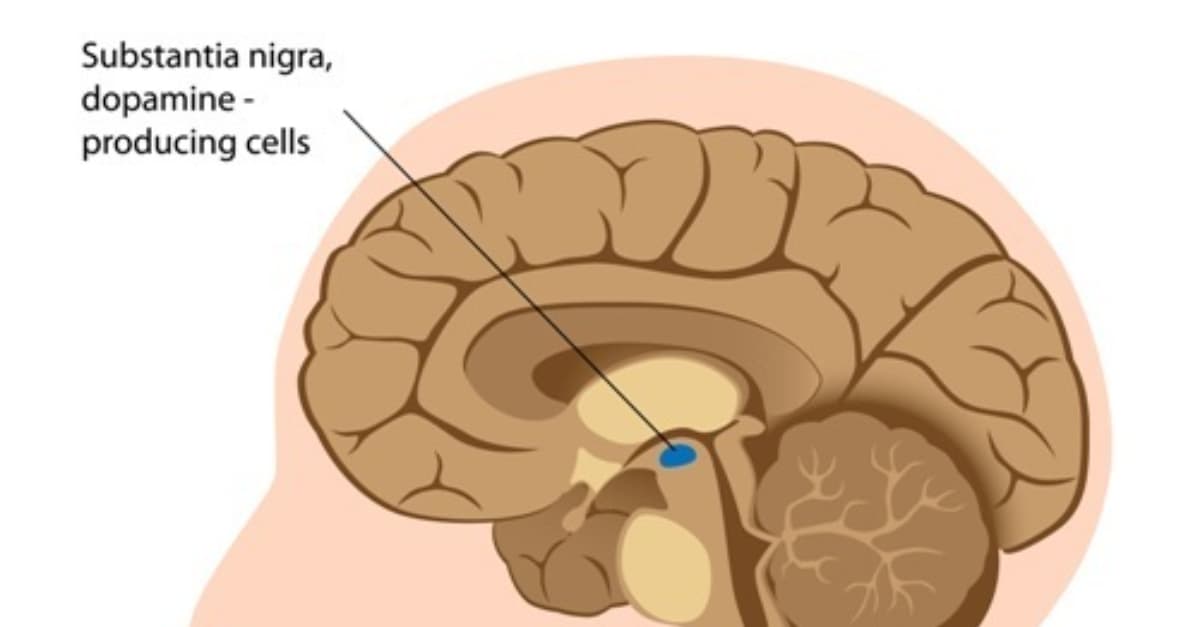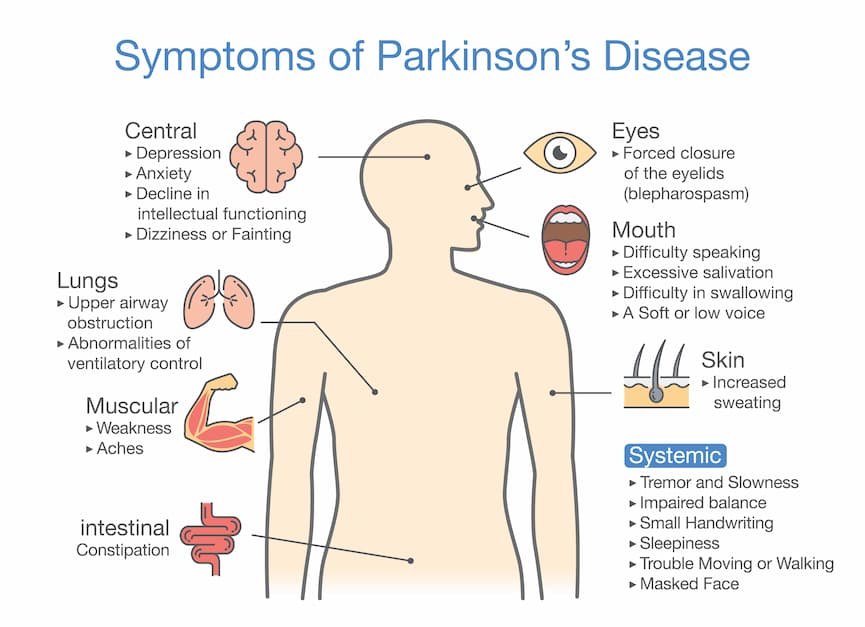What are the first symptoms of Parkinson’s disease is perhaps one of the most frequently asked questions in the consultations of neurologists, Parkinson’s specialists, and family physicians. The fact is that the way this disease manifests itself is so complex and varied that no common pattern can be established. Each patient is different, which is a challenge for the expert’s diagnosis and their quality of life. In this article we will look at Parkinson’s symptoms and the treatments available to control these symptoms.
Parkinson’s Disease

Parkinson’s disease is a neurodegenerative disorder that affects the nervous system chronically and progressively. It is the second most prevalent disease after Alzheimer’s disease and belongs to the so-called Movement Disorders. It is commonly known as Parkinson’s disease in reference to James Parkinson, the doctor who first described it in 1817 in his monograph An essay on the shaking palsy. Parkinson’s disease is characterized by the loss (or degeneration) of neurons in the substantia nigra, a structure which is located in the middle part of the brain. This loss causes a lack of dopamine in the body, a substance that transmits information necessary for us to make normal movements. A lack of dopamine causes movement control to be altered, resulting in typical motor symptoms such as resting tremors or rigidity. The ultimate cause of Parkinson’s disease is not known today. However, it is thought that it may be due to a combination of genetic, environmental, and aging factors.
Parkinson’s Symptoms

The first symptoms of Parkinson’s disease are mild and become increasingly noticeable over time. The typical initial picture is one of joint pain, movement difficulties, and exhaustion. Handwriting also begins to change and becomes small and irregular. In 80 percent of patients, symptoms begin on one side of the body and then become generalized. Likewise, the character varies in the early stages, so irritability or depression without apparent cause is common. All these symptoms can last for a long time before the classic signs confirming the development of the disease appear. The most common symptoms of Parkinson’s disease are the following:
- Tremor: it is present in 70% of patients. They often appear in the hands and fingers and become more evident when the person is at rest. They improve with voluntary movement and worsen with stress. When the person sleeps, the tremors disappear.
- Stiffness: it is the resistance or lack of muscular mobility. It is suffered by 90% of those affected. It can be painful and affects any part of the body.
- Slowness of movement: it manifests itself from the early stages of the disease with activities that require precision, such as sewing or writing. As the disease progresses, it becomes more evident in less precise activities, such as turning in bed or buttoning buttons.
- Postural and gait disturbances: these usually appear in advanced stages of the disease. Patients tend to tilt their head and trunk forward and walk with short steps. Sometimes they speed up without being able to stop. They may also block, especially when passing through doorways or narrow places. These factors, as well as instability when turning, are the cause of the frequent falls suffered by people with Parkinson’s disease.
- Depression: This is a problem common to all chronic diseases, and in Parkinson’s, it can be detected even before the main symptoms begin. It worsens with the drugs used to combat this pathology, although antidepressants are quite successful in curbing both depressions and emotional changes.
- Difficulties in swallowing and chewing: The malfunctioning of the muscles makes this daily task difficult, favoring the accumulation of saliva and food in the oral cavity. As a consequence, choking and drooling are common.
- Diction: At least 50 percent of sufferers have diction problems: they speak in a low voice, hesitate before speaking, repeat words or speak too fast.
- Urinary problems: Impairments of the nervous system that regulates muscle activity cause some sufferers to be incontinent or have difficulty urinating.
- Constipation: The progressive sluggishness of the intestinal and abdominal muscles is the main cause of constipation, although diet and low physical activity also play a role. It usually occurs in 50 percent of patients.
- Sleep disorders: Drowsiness and nightmares are characteristic of this disease and are usually associated with drugs. Behavioral disorders may occur during the REM sleep phase.
- Loss of expressiveness: the face loses expressiveness, and the so-called “fish or mask face” appears due to a lack of expression of the muscles of the face. Also, they have difficulty keeping their mouth closed.
- Akinesia: It consists of total immobility that appears suddenly and can last from a few minutes to an hour.
- Weight gain or loss: The patient’s weight may vary, either by losing weight (due to the disease itself, motor fluctuations, medications, calorie reduction, cognitive impairment, depression, hyposmia, gastrointestinal dysfunction) or sometimes by gaining weight (due to the effects of Parkinson’s surgery or treatment with dopaminergic agonists). Weight loss can be dangerous, as it can negatively influence the disease.
- Hyposmia: Consists of poor distinction of odors or reduced ability to perceive them. Hyposmia appears in 80 percent of Parkinson’s patients, according to the SEN.
Treatment

There is currently no cure for Parkinson’s disease, but it can be controlled very effectively. Many aspects of the neurodegenerative process underlying the disease are known, but the treatments that modify it are still in the experimental phase. Therefore, the current treatment of Parkinson’s disease is aimed solely at ameliorating the symptoms resulting from neuronal loss and death. As a consequence, Parkinson’s disease sufferers must take these drugs against Parkinson’s symptoms for life, according to the dosage and combination of drugs that their neurologist considers most appropriate for their particular case. Some of the drugs prescribed to combat Parkinson’s symptoms are:
- Levodopa: This is a chemical that converts to dopamine, helping to replace the supply in the brain.
- Dopamine agonists: They act as dopamine in the brain. Bromocriptine, Lysuride, Pergolide, Pramipexole, Ropinirole.
- Monoamine oxidase type B (MAO-B) enzyme inhibitors: They help prevent dopamine from being broken down. These drugs are selegiline, rasagiline, and safinamide.
- Catechol-O-methyltransferase (COMT) inhibitors: Entacapone is the main drug in this group, and its action focuses on preventing the breakdown of dopamine in the brain.
- Anticholinergics: They help control tremors.
